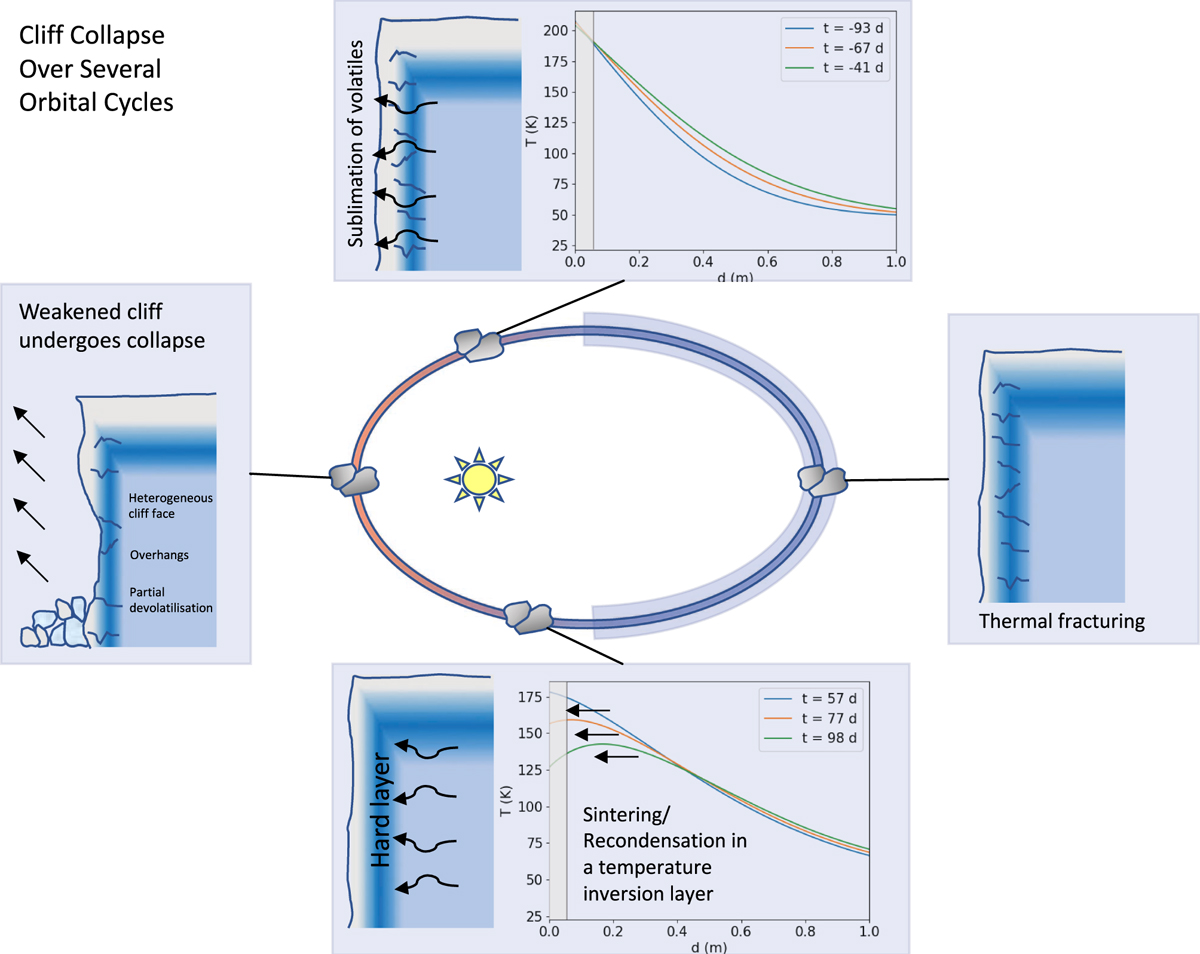Fig. 11

Model for the collapse of cliffs driven by thermal stresses. Solar insolation heats exposed interior material on the face of cliffs, driving the sublimation of volatiles, whilst flat, dust covered surfaces are insulated from large temperature changes. Temperature inversions can occur as the seasonal thermal wave penetrates to depth, even as the surface begins to cool again, allowing recondensation of the volatiles in the top layers. Recondensed water-ice forms a hard layer which is vulnerable to thermal fracturing, leading eventually to cliff collapse. Temperature profiles are taken from the I = 50 J m−2 K−1 s−1∕2, latitude = −90∘ case, for times in days since perihelion. Grey boxes show the regions, within five skin depths of the surface, where diurnal temperature changes dominate.
Current usage metrics show cumulative count of Article Views (full-text article views including HTML views, PDF and ePub downloads, according to the available data) and Abstracts Views on Vision4Press platform.
Data correspond to usage on the plateform after 2015. The current usage metrics is available 48-96 hours after online publication and is updated daily on week days.
Initial download of the metrics may take a while.


